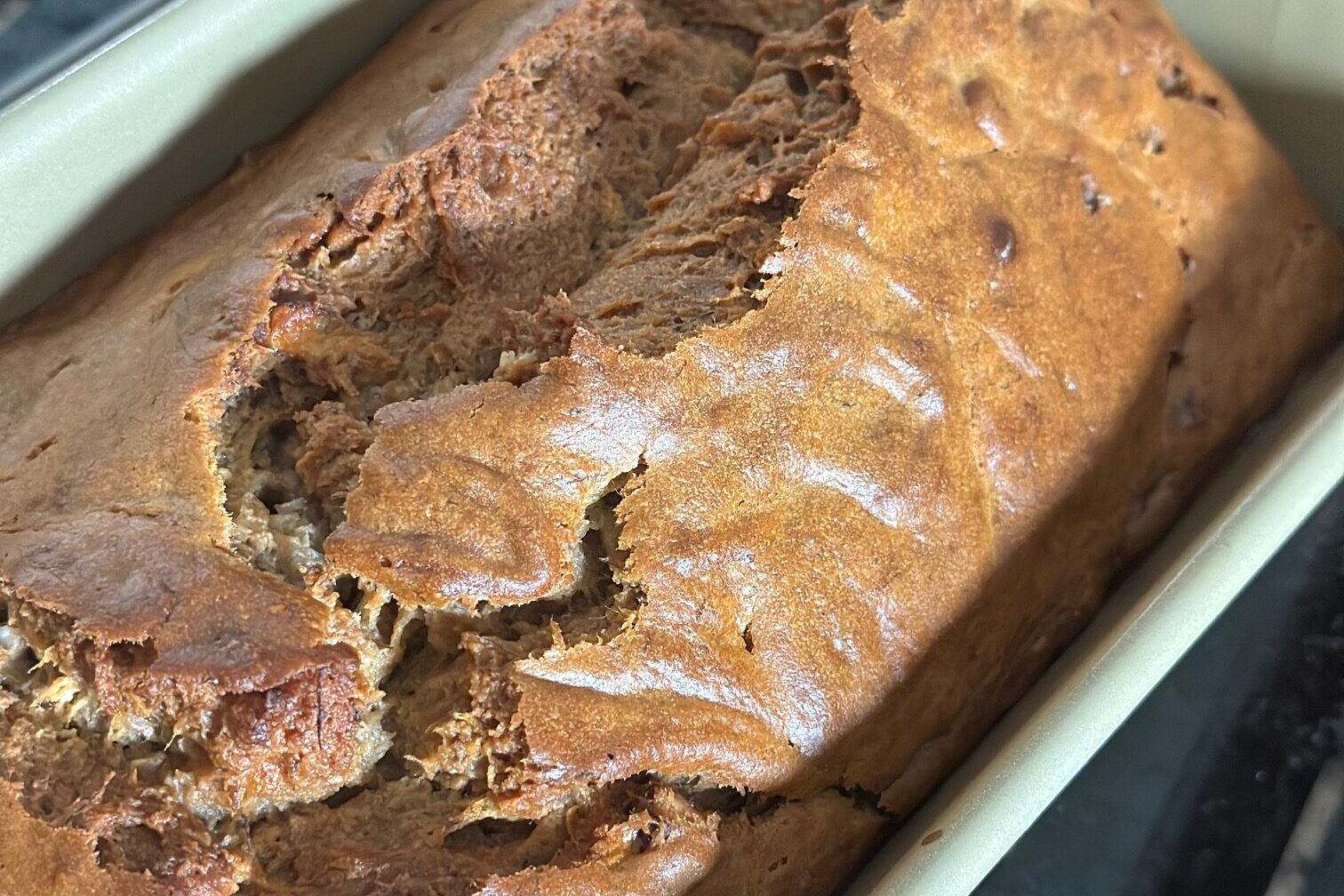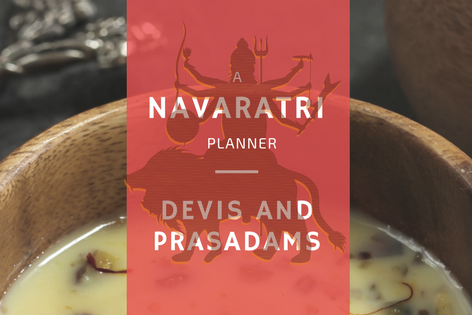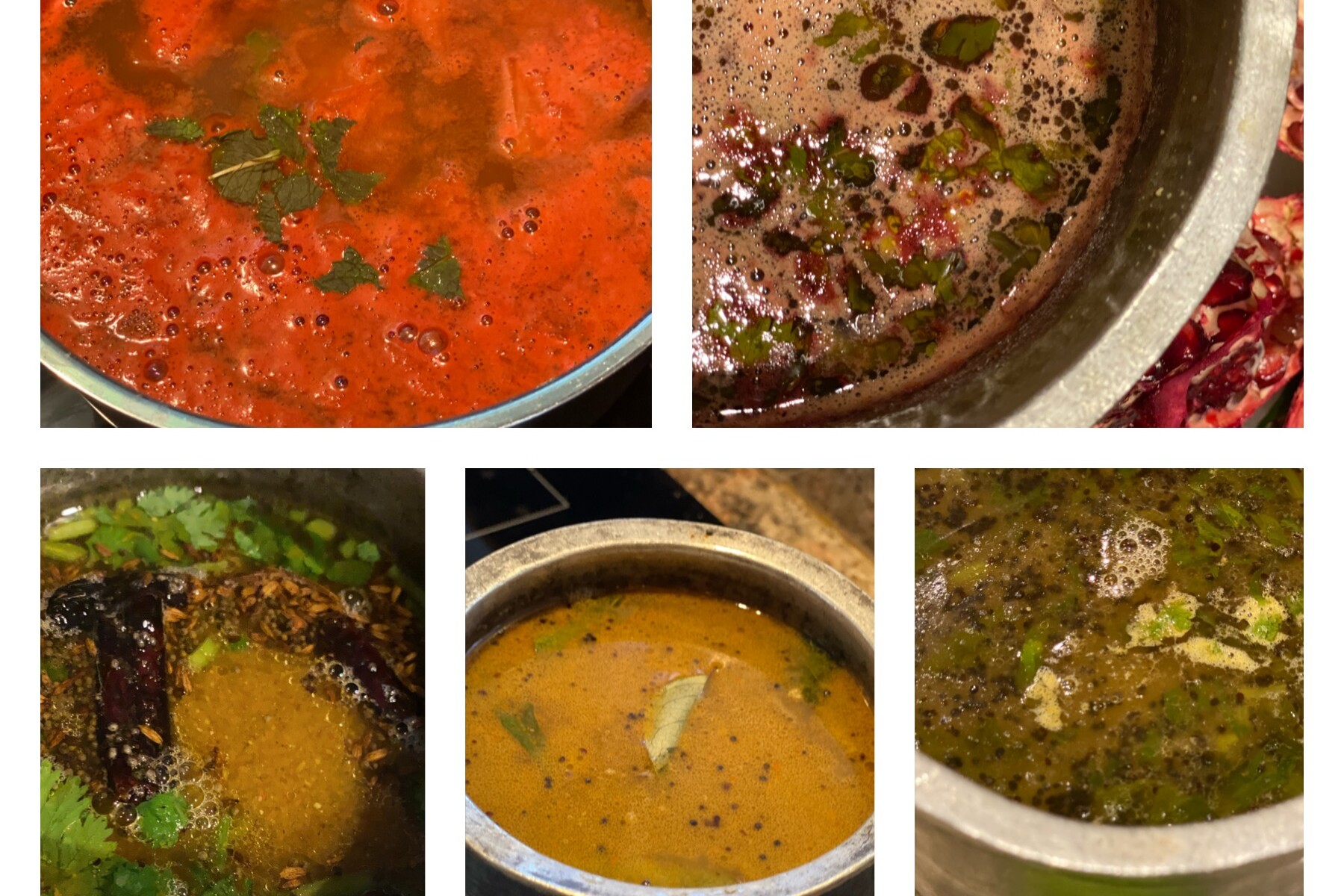
You would think that 2 whole weeks of being at home during the winter holidays would have resulted in many culinary experiments for Roz Ka Khana. In my case, it’s sadly the opposite. Crazed school day mornings, busy swim and basketball class evenings leave me rushed and stressed but I feel like I always find the time to squeeze in that pistachio cookie or banana-nut muffin as a means to de-stress at that unearthly night hour. I know, it’s quite crazy. But when I had 2 weeks of late, lazy mornings and nothing planned for the day, cooking was the last thing on my mind. And so, when Uma, my good friend, offered to try one of her signature recipes and also offered to come home to make it for us, it was a perfect solution to get me out of my lethargy. Thanks Uma, for the recipe and for snapping us all out of it with your scrumptious brunch recipe.
The bright idea of making this Kerala delicacy came from my husband, Girish, who mentioned it to Uma one afternoon, since we were, as usual, talking about food. We were, actually talking about rare South Indian delicacies, rare, because there is a dearth of South Indian restaurants in Dallas, specifically. So we make do with just talking about it, and craving for it;) Girish was talking about this dish that he had in Toronto, round white lacy, spongy pancakes with a vegetable gravy like dish. You could tell he was reminiscing every little detail though he didn’t remember the name of the restaurant.
Uma is from Palghat or Palakkad, a town in the state of Kerala in South India, that connects Kerala to Tamil Nadu. When she heard about this Aappam craving, she generously suggested that she made it often and would love to make it for him one day. We were shameless enough to keep reminding her about it, so within a week, Uma was home to make it for us and for Roz Ka Khana.
Aappam (Kerala Rice Pancakes)
2 cups idli rice or parboiled rice (available in Indian stores)
2 cups raw rice (Ponni rice or Sona Masoori rice or any kind)
1/2 cup urad dal (skinned black gram – split or whole)
Soak the above for 4-6 hours. Grind to a smooth paste in a grinder or blender. Make sure to keep the batter thick, so don’t add too much water while grinding. Keep the batter in a warm place overnight, to help it ferment. (You can keep it in a warm oven – preheat to 200F and then turn off the oven – and keep the batter in the oven overnight). You can store this fermented batter in the fridge till you want to make hot, fresh, aappams.
On the day of making the aappam, take about 4 big serving spoons of batter in a saucepan, add about 1/8 tsp of baking powder and 1/4 cup coconut milk. You may also add a little water till the batter is of a slightly thin, pouring consistency.
You will need to use a round, deep, preferably non stick vessel to make the appams, like the picture below. Using a dab of oil on a paper towel, wipe the vessel so it is coated with a thin coating of oil.


When the vessel is hot, pour the dough slowly, from the rim all around, until the vessel is completely coated with the dough. You may also swing the vessel in a circular motion so is gets completely coated.
[youtube=http://www.youtube.com/watch?v=oxctN1NIj2U]
Cover with a lid and leave for a minute or two. When the aappam is cooked completely, the edges get a little golden and it starts to leave the sides of the pan. When you hold the vessel sideways, the completely cooked aappam will just slide off on its own. Serve with hot vegetable stew.
[youtube=http://www.youtube.com/watch?v=xlVMNvBC_Jk]
Vegetable stew (to serve 8 )

Potatoes – 2, sliced lengthwise
Onions – 1 1/2, sliced lengthwise
Carrots – 2 or about 6-8 baby carrots, julienne cut
French beans – 12, julienne cut
Zucchini – 1 , chopped into small lengthwise bits
Ginger – 2″, grated
Green chilies – 6-8, sliced lengthwise
Coconut milk – 1 can

1. Heat a kadai or heavy bottomed vessel. Add 1 tbsp oil.
2. Add crushed ginger and green chilies and saute for 2 minutes
3. Add onions and saute again for about a minute or two. Make sure not to brown the onions, it has to just cook until glazed.

4. Now add the carrots, beans, potatoes and zucchini. Add about a cup water, some turmeric and salt. Cover with a lid and let boil until the vegetables are just cooked. Make sure not to overcook.

5. Lastly add the can of coconut milk to the stew. Simmer for a few minutes and then turn off the stove.
6. Garnish with chopped curry leaves. Serve hot with aappam.
5 Comments
Comments are closed.





This time the stew stole the show! Looks good and appetising:) Happy New Year!
Hi, I got to your blog through trackback from mine 🙂 I like your writing style! Also glad you’ve decided to resurrect your blog for 2009!
Hi shyamala
Thanks for your comment. I am a regular reader of Food in the Main. In fact I first got to your blog through a Paruppu Usuli search:) Great writing style! Thanks for posting the authentic South indian recipes.
Malini